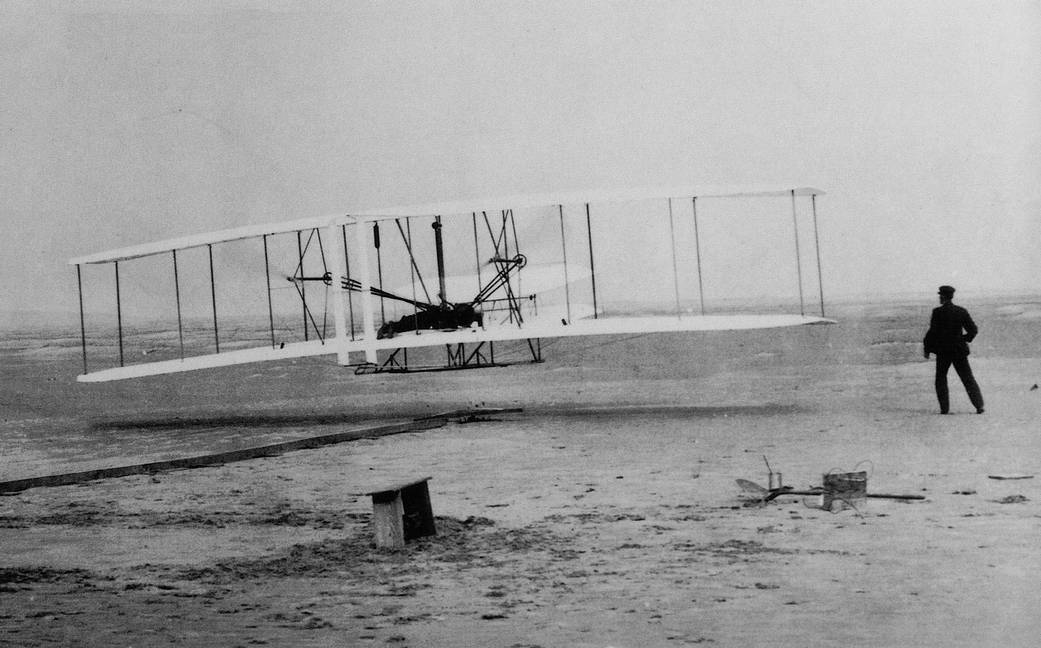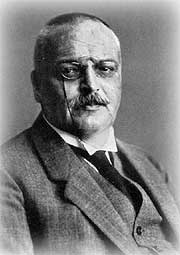ARTICLE SUMMARY:
The year 1906 is marked as the starting point for a number of key innovations that are commonplace today, including powered flight, air conditioning, and electronics. It is also the year that Dr. Alois Alzheimer became the first to link a patient’s dementia symptoms to microscopic changes in the brain—identifying a neurodegenerative disease that is now a COVID-19-vulnerable, leading cause of disability and death.
Several momentous events took place 114 years ago, in 1906, that forever changed life as we know it. In Dayton, Ohio, brothers Orville and Wilbur Wright were granted a patent for a “flying machine,” three years after the aviation pioneers first flew their powered marvel of engineering for 12 seconds in Kitty Hawk, North Carolina. In this same year, American electrical engineer Willis Carrier was  granted a patent for the first air conditioning system, and the underlying technology for this life-changing climate control invention is still in use today. In addition, the US Congress passed the consumer safety-focused Meat Inspection Act and the Pure Food and Drug Act, and American inventor Lee de Forest invented the three-element “Audion” (triode) vacuum tube, a pioneering device that could amplify electrical signals. Many of today’s electronic innovations would not have been possible without the vacuum tube, including radio broadcasting, long distance telephone lines, audio recording, radar, public address systems, talking motion pictures, television, and the first computers.
granted a patent for the first air conditioning system, and the underlying technology for this life-changing climate control invention is still in use today. In addition, the US Congress passed the consumer safety-focused Meat Inspection Act and the Pure Food and Drug Act, and American inventor Lee de Forest invented the three-element “Audion” (triode) vacuum tube, a pioneering device that could amplify electrical signals. Many of today’s electronic innovations would not have been possible without the vacuum tube, including radio broadcasting, long distance telephone lines, audio recording, radar, public address systems, talking motion pictures, television, and the first computers.
 Also in 1906, Dr. Alois Alzheimer, a German clinical psychiatrist and neuroanatomist, was the first to link dementia symptoms in a patient to microscopic brain changes—a discovery that would later make him a household name. In November of that year, Alzheimer gave a lecture at the 37th Conference of South-West German Psychiatrists in Tübingen, Germany, where he reported on an unusual five-year case study involving a “peculiar severe disease process of the cerebral cortex.” His findings involved a woman in her 50s, Auguste Deter, who had been admitted to the Community Psychiatric Hospital at Frankfurt am Main with paranoid symptoms and rapidly progressing sleep disorders, memory loss, language problems, disorientation, hallucinations, and unpredictable behavior.
Also in 1906, Dr. Alois Alzheimer, a German clinical psychiatrist and neuroanatomist, was the first to link dementia symptoms in a patient to microscopic brain changes—a discovery that would later make him a household name. In November of that year, Alzheimer gave a lecture at the 37th Conference of South-West German Psychiatrists in Tübingen, Germany, where he reported on an unusual five-year case study involving a “peculiar severe disease process of the cerebral cortex.” His findings involved a woman in her 50s, Auguste Deter, who had been admitted to the Community Psychiatric Hospital at Frankfurt am Main with paranoid symptoms and rapidly progressing sleep disorders, memory loss, language problems, disorientation, hallucinations, and unpredictable behavior.
Deter died at age 55, and Alzheimer’s post-mortem examination of her brain showed various abnormalities. Together with two Italian physicians, Alzheimer used new staining techniques to identify amyloid plaques and neurofibrillary tangles, which had never previously been described. In 1910, German psychiatrist Emil Kraepelin named the disease after Alzheimer. Today, the pathological diagnosis of Alzheimer's disease is still generally based on the same investigative methods that Alzheimer used more than 100 years ago.
This devastating, complex disease is not just about memory loss. It is the sixth-leading cause of death overall in the US, the fifth-leading cause of death among those age 65 and older, and a leading cause of disability. As of 2019, nearly six million Americans of all ages lived with the disease, almost two-thirds women, according to the Alzheimer’s Association. Between 2000 and 2017, the number of deaths from Alzheimer’s as recorded on death certificates increased 145%. And, by 2050, the number of people age 65 and older with the disease is projected to reach 14 million. According to some estimates, the costs for treating Alzheimer’s and other dementia patients could rise to more than $1 trillion a year in the US by 2050.
Today, with the ongoing fight against the COVID-19 pandemic, Alzheimer’s and other dementia patients have been classified as some of the most vulnerable to severe infection and death. It was not surprising to learn that one of the initial infection clusters in the US developed in a long-term care facility – which is often where those with dementia-related cognitive limitations live. Preventing infection in this at-risk population must be paramount. The CDC provides guidance for older adults at risk of COVID-19 here.
For information on recent medical technology advances in Alzheimer’s and other neurodegenerative diseases, see the related MedTech Strategist content on this page. Also, in the interest of supporting our incredible global medtech community that is fighting the COVID-19 pandemic, see the complimentary novel coronavirus coverage from all of our publications here.
#WrightBrothers #KittyHawk #flyingmachine #WillisCarrier #airconditioning #MeatInspectionAct #FDA #PureFoodandDrugAct #LeedeForest #Audion #vacuumtube #AloisAlzheimer #dementia #neurodegenerative #Alzheimersdisease #AugusteDeter #EmilKraepelin #AlzheimersAssociation #InMedtechHistory #medicaldevice #biomedical #medtech #CommunityBlog #MedTechStrategist #tracyschaaf
![]() Trial MyStrategist.com and unlock 7-days of exclusive subscriber-only access to the medical device industry's most trusted strategic publications: MedTech Strategist & Market Pathways. For more information on our demographics and current readership click here.
Trial MyStrategist.com and unlock 7-days of exclusive subscriber-only access to the medical device industry's most trusted strategic publications: MedTech Strategist & Market Pathways. For more information on our demographics and current readership click here.
